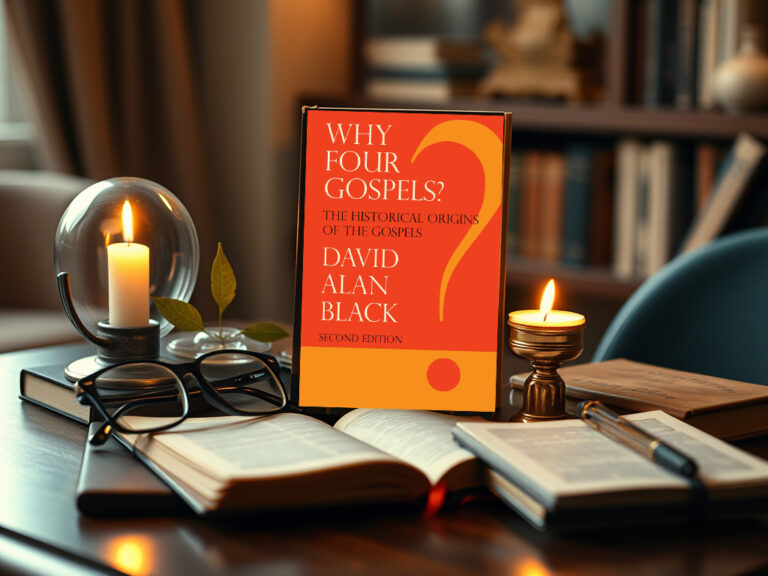Jesus as Crucified Messiah, Son of God
by Drew Smith
 [ene_ptp]The penultimate event in each of the four canonical Gospels is the death of Jesus by crucifixion. As modern readers of these stories, particularly living in a world that celebrates violence, and especially after we swarmed theaters in 2004 to watch Mel Gibson’s depiction of the crucifixion of Jesus, we might wonder why none of the four Gospels describe the grotesque details of crucifixion. They simply say that Jesus was crucified.
[ene_ptp]The penultimate event in each of the four canonical Gospels is the death of Jesus by crucifixion. As modern readers of these stories, particularly living in a world that celebrates violence, and especially after we swarmed theaters in 2004 to watch Mel Gibson’s depiction of the crucifixion of Jesus, we might wonder why none of the four Gospels describe the grotesque details of crucifixion. They simply say that Jesus was crucified.
The reason for the lack of a blow by blow description of Jesus’ crucifixion may be because the people of the first century Roman World were very well aware of the practice and effects of this horrible tool of execution. The Romans used crucifixion often, and they used it well, as a deterrent against upstart rebels. Jesus was certainly not the only one to die on a Roman cross, so to include the bloody specifics of how crucifixion was carried out would probably be unnecessary.
Yet, we also may propose that the lack of these details about the act of crucifixion itself is also due to the fact that each Gospel writer wants his audience’s attention focused on other particulars that are much more important to the story of Jesus’ death.
As we approach Mark’s telling of Jesus’ execution during this Season of Lent, we ought to be reminded that Mark is not writing history as we would write history. Rather, Mark is interpreting history through a narrative story he tells to communicate what it means that Jesus died on a Roman cross.
Indeed, much of the details that Mark includes other than that Jesus was crucified may not be entirely historical, at least to our modern minds. But that is not the point. Like the rest of the story he tells, the Passion of Jesus is narrated so that we might pay close attention to the events and words in this story to inform us of the importance of Jesus’ death for faith and discipleship.
There are certainly many things happening in this scene, but of utmost importance are the things that are said to or about Jesus by those who stand around the cross. On one level, these statements are meant as scornful indictments that mock Jesus and characterize him as nothing more than a common peasant who was badly mistaken about who he thought he was. Yet, with ironic flair, Mark places these indictments on the lips of those who watch Jesus die with the intent of using them as proclamations that declare the truth about Jesus.
Jesus is mockingly treated as a king. He is given a purple robe and a crown of thorns, and those who beat him and mock him bow down to him in sarcastic worship. The sign that is hung above him reads, “King of the Jews,” and the religious leaders contemptuously say, “Let the Messiah, the King of Israel, come down from the cross now, so that we might see and believe.”
The irony of this is very clear. While the religious leaders mean to mock Jesus as one who cannot possibly be a king because he hangs on a criminal’s cross, Mark means to use this to show that Jesus is king precisely because he hangs on a cross.
The kingly throne of Jesus according to Mark is not a seat of gold and jewels, but one of wood and nails. His kingly authority is not secured through power and violence. Jesus is king because he gives his life away in protest of the injustices of his world.
Jesus is also mocked by those who stand around the cross by their taunts of, “He saved others; he cannot save himself.” In their thinking, if Jesus healed others, which Mark’s story is clear that he did, then he should be able to save himself. Those who watch Jesus die challenge him to do just that.
Again, the irony is obvious. These people were mocking Jesus because he hung on a cross in weakness and he was helpless to change his circumstances. Indeed, from the cry of Jesus accusing God of abandonment, we learn that even God could not change the course of this tragic event.
But Mark uses their mocking to express the true mission of Jesus. It is exactly because Jesus remains on the cross, giving his life, that he saves others. Remaining true to two of his earlier statements, “Those who want to save their life must lose it” and “The Son of Man came to give his life as a ransom for many,”
Jesus demonstrated to those around the cross his own willingness to die to save others. According to Mark’s story, in giving his life on a scornful cross, Jesus was indeed achieving salvation for humanity.
There is one final statement that deserves our attention and our response. This statement serves the crucifixion scene as a defining moment that expresses the truth of Jesus’ excruciating death. It is the testimonial spoken by the Roman Centurion who stood at the foot of the cross.
As this soldier was about his daily routine of crucifying criminals, something he probably did on a regular basis, he witnesses something he had never before witnessed. He sees the death of this innocent man, and he confesses, “Truly, this man was God’s Son.”
The title Son of God as it is used in reference to Jesus in Mark is important. No human, not even Jesus, ever uses this to refer to Jesus. Only God and the unclean spirits refer to Jesus as the Son of God. Why is this?
Perhaps it is because the human characters of Mark’s story never recognize Jesus as the Son of God. In Mark’s narrative, it is Jesus’ death, not his miracles and not his resurrection that is the defining moment that declares him as God’s Son. It is Jesus’ death that is the ultimate expression of his true nature as God’s Son, the one sent by God to challenge the powers, both spiritual and political. In seeing Jesus die, the Roman Centurion confesses Jesus as the Son of God.
During the remaining days of this Holy Week, each one of us stands at the foot of the cross. We look directly in the face of Jesus and we see him breathe his last breath and die. As we reflect on his death, do we dare to remember that we are not simply called to stand and watch? Do we dare to confess our own faith in Jesus as God’s Crucified Messiah? Do we dare to take the road that he took by challenging those who bring oppression and injustice? Do we dare to embrace his call to take up the scandalous cross and follow him?
[slideshow_deploy id=’2613′]
Click on a book cover to get more information on that book.





